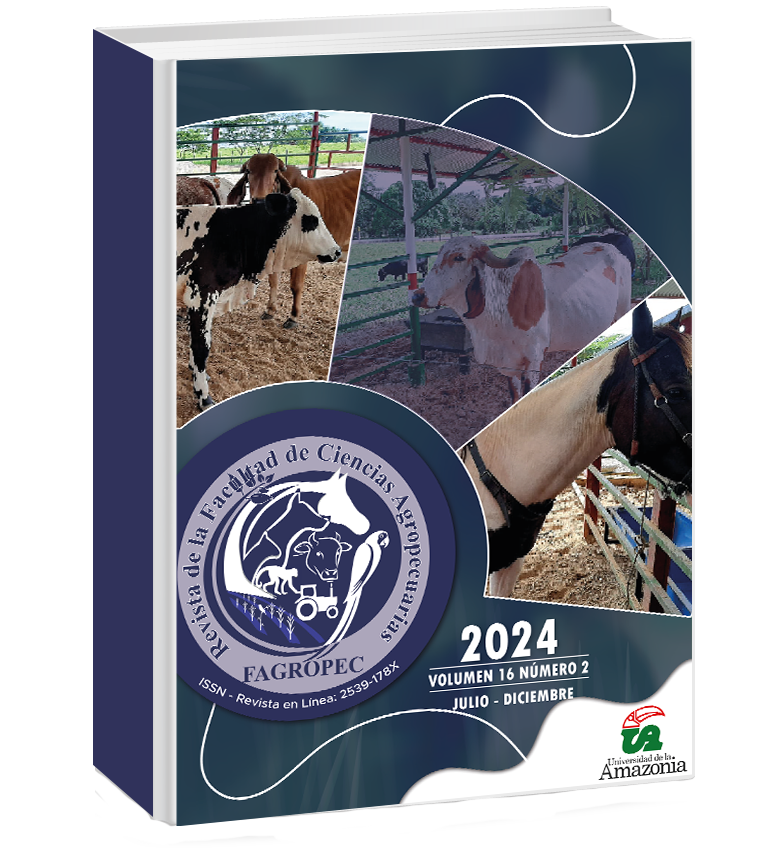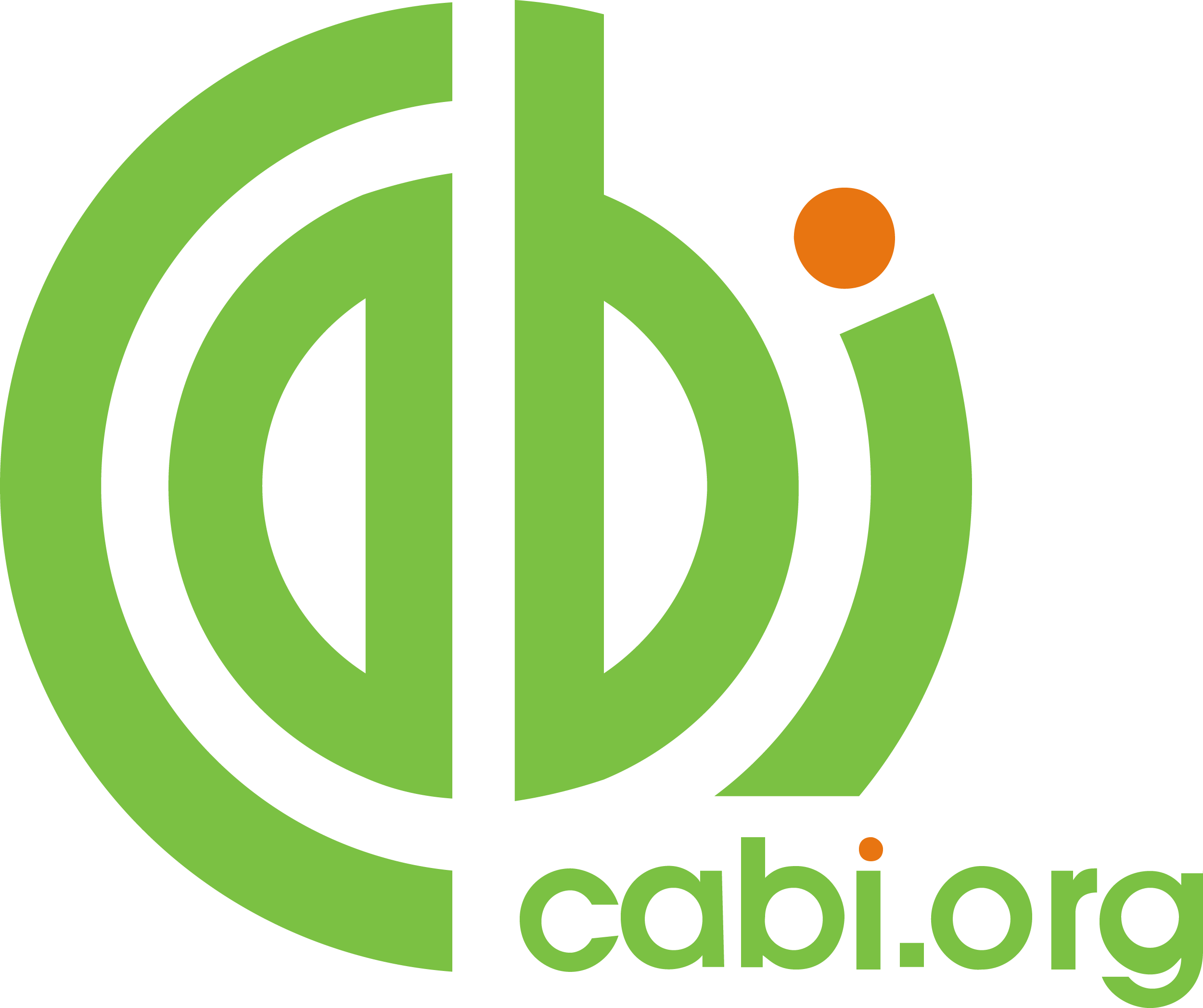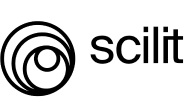Evaluation of rehabilitation pruning for the management of Monilliophthora perniciosa in an agroforest system with copoazú (Theobroma grandiflorum) under conditions of the colombian amazon
DOI:
https://doi.org/10.47847/fagropec.v16n2a3Keywords:
Witch’s broom, Theobroma grandiflorum, Moniliophthora perniciosa, phytopathogen, fungal diseaseAbstract
Witch's broom, caused by the phytopathogen Moniliophthora perniciosa, is one of the most destructive fungal diseases affecting copoazú (Theobroma grandiflorum) cultivation in the Colombian Amazon region. This study aimed to evaluate rehabilitation pruning as a method for managing witch's broom in an agroforestry system with copoazú. The incidence, severity, and the relationship between environmental variables and disease progression were assessed using two different rehabilitation pruning methods and a control (crop without intervention). Evaluations were conducted during two different periods of the year: the dry season and the rainy season.
Highly significant statistical differences (P < 0.0001) were found for all evaluated factors in both incidence and severity (treatments, season, and their interaction). Treatment 2, which involved rehabilitation pruning with four branches retained, showed the lowest mean values with an average incidence of 4.4% and severity of 0.08. During the dry season, the lowest values for both variables were observed. Regarding the relationship between the progression of witch's broom disease and environmental variables, a high correlation was found between disease incidence and severity with relative humidity and precipitation. This indicates favorable conditions for the advancement of witch's broom in copoazú plantations in the Colombian Amazon region.
In conclusion, rehabilitation pruning in copoazú cultivation appears to be an effective method for controlling witch's broom in the Colombian Amazon region.
Downloads
References
Abad, M., Alvarado, A., & Gallardo, A. (2018). Análisis comparativo sobre la incidencia de las tres principales enfermedades en el cacao CCN-51, en el cantón La Troncal, provincia del Cañar, Ecuador. Rev. Cient. Cien. Nat. Ambien., 12(1): 20- 30. ISSN: 1390-8413.
Aime MC, Phillips-Mora W. (2005). The causal agents of witches broom and frosty pod rot of cacao (chocolate, Theobroma cacao) form a new lineage of Marasmiaceae. Mycologia. 97(5):1012–1022. https://doi.org/10.3852/mycologia.97.5.1012
Alves RM, Silva CRS, Silva MSC, Silva DCS, Sebbenn AM. (2013). Diversidade genética em coleções amazônicas de germoplasma de cupuaçuzeiro [Theobroma grandiflorum (Willd. ex Spreng.) Schum.]. Rev Bras Frutic 35:818–828. https://doi.org/10.1590/S0100-29452013000300019
Barros, O. (1981). Cacao. Manual de Asistencia Técnica Agropecuaria, No 23. Bogotá. ICA. P 210-216.
Barsottini, O. G. P., Pedroso, J. L., Franca Jr, M. C., Braga‐Neto, P., D'Abreu, A., Saraiva‐Pereira, M. L.,… & Saute, J. A. (2013). Nonmotor and extracerebellar features in Machado‐Joseph disease: a review. Movement Disorders, 28(9), 1200-1208.
Da Silva RA, Souza G, Lemos LSL, Lopes UV, Patrocino NGRB, Alves RM, Marcellino HL, Clément D, Micheli F, Gramacho KP. (2017). Genome size cytogenetic data and transferability of EST-SSRs markers in wild and cultivated species of the genus Theobroma L. (Byttnerioideae, Malvaceae). PLoS One 12(2):e0170799. https://doi.org/10.1371/journal.pone.0170799
Di Rienzo, J.A.; Casanoves, F.; Balzarine, M.G.; Gonzales, L.; Tablada, M.; Robledo, C.W. (2020). InfoStat Versión 2018.
Fernández Jeri, A., Torres Armas, E., Chávez Quintana, S., Julca Otiniano, A., & Fernández Jeri, L. (2022). Caracterización socioeconómica y ambiental de las fincas productoras de cacao nativo en la provincia de Bagua, Perú. Idesia (Arica), 40(2), 67-75.
IDEAM (Instituto de Hidrología, Meteorología y Estudios Ambientales CO) (2024). Datos meteorológicos del Departamento del Caquetá. Estación Limnimétrica de Albania Caquetá, Bogotá, 223 p.
Instituto Colombiano Agropecuario - ICA. (2022). Cronograma de actividades prácticas empresariales 2021-II. En Instituto Colombiano Agropecuario.
Lopes UV, Wilson RM, Pires JL, Clement D, Yamada MM, Gramacho KP. (2011). Cacao breeding in Bahia, Brazil - strategies and results Crop Breed. Appl Biotechnol 11(spe) Viçosa June 2011. https://doi.org/10.1590/S1984-70332011000500011
López Juárez, S. A., Sol-Sá nchez, A., Có rdova Á valos, V., & Gallardo Ló pez, F. (2017). Efecto de la poda en plantaciones de cacao en el estado de Tabasco, México. Revista Mexicana de Ciencias Agrícolas, 14, 2807–2815. https://doi.org/10.29312/remexca.v0i14.452
Malhotra, S. K., & Apshara, S. E. (2017). Genetic resources of cocoa ( Theobroma cacao L.) and their utilization-An Appraisal. Indian Journal of Genetics and Plant Breeding (The), 77(2), 199. https://doi.org/10.5958/0975-6906.2017.00027.X
Murrieta Median, E., & Palma, H. (2018). Manejo Integrado de la "Mazorca negra" en el cultivo de cacao. Lima: USAID.
Parra D, Contreras I, y Pineda J. (2008). Escoba de bruja del cacao en Venezuela. Centro de Investigaciones del Estado Miranda (INIA). Venezuela. 53-56 p.
Pereira, F. M.; Kavati, R. (2015). Contribuição da pesquisa científica brasileira no desenvolvimento de algumas frutíferas de clima subtropical. Revista Brasileira de Fruticultura, v.33, n. spe1, p.92-108. https://doi.org/10.1590/S0100-29452011000500013.
Pugliese AG, Tomas-Barberan FA, Truchado P, Genovese MI (2013) Flavonoids, proanthocyanidins, vitamin C, and antioxidant activity of Theobroma grandiflorum (Cupuassu) pulp and seeds. J Agric Food Chem 61(11):2720–2728. https://doi.org/10.1021/jf304349u
Rivera R., Valarezo O., Vera L., Chavarria J. & Guzman A. (2014). Efecto de la poda fitosanitaria sobre la enfermedad escoba de bruja en el cultivo de cacao. REV. INTROPICA.
Secretaría de Agricultura del Caquetá, (2017). CONSENSO DE EVALUACIONES AGROPECARIAS DEPARTAMENTO DEL CAQUETA 2016. Documento técnico.
Solis, K., Peñaherrera, S., & Vera, D. (2021). Las enfermedades del cacao y las buenas prácticas agronómicas para su manejo. Mocache: INIAP-Pichilingue.
Tirado, P., Lopera, A., & Ríos, L. (2016). Estrategias de control de Moniliophthora roreri y Moniliophthora perniciosa en Theobroma cacao L. Corpoica Ciencia y Tecnología, Mosquera, 17(3): 417-430. ISSNe 2500-5308.
Trujillo, E., Castro, D & Morales, J. (2014). Inventario de la familia Araceae en la granja experimental agroecológica Balcanes de la universidad de la amazonia. Momentos de Ciencia.
Vega, C. A., Torres-Bazurto, J., Barrientos-Fuentes, J. C., Magnitskiy, S., & Balaguera-López, H. E. (2021). Efecto de la fertilización orgánica y la poda sobre la producción de cacao en Cundinamarca, Colombia. Revista U.D.C.A Actualidad & Divulgación Científica, 24(2). https://doi.org/10.31910/rudca.v24.n2.2021.1818
Vera-Chang, J. F., Bautista-Palma, L. A., Vásquez-Cortez, L, H., Alvarado-Vásquez, K. E., Tuarez-García, D. A., Rodríguez-Cevallos, S. L, Reyes-Pérez, J. J., Intriago-Flor, F. G., Radice, M., Naga-Raju, M., Revilla-Escobar & K., Aldas-Moreno, J. P. (2024). Evaluación de tres intensidades de poda y cuatro fases lunares en híbridos de cacao. Revista Agrotecnológica Amazónica, 4(1), e628. https://doi.org/10.51252/raa.v4i1.628
Vera, J., Vera, S., Sánchez, F., Vásconez, G., Garcés, F., Ramos, R., . . . Vallejo, C. (2022). Efecto alelopático de escoba de bruja (Moniliophthora perniciosa Stahel.) inoculadas en siete especies de malezas. Ciencia y Tecnología, 6(1): 11-15.
Downloads
Published
Issue
Section
License

This work is licensed under a Creative Commons Attribution-NonCommercial-ShareAlike 4.0 International License.
























